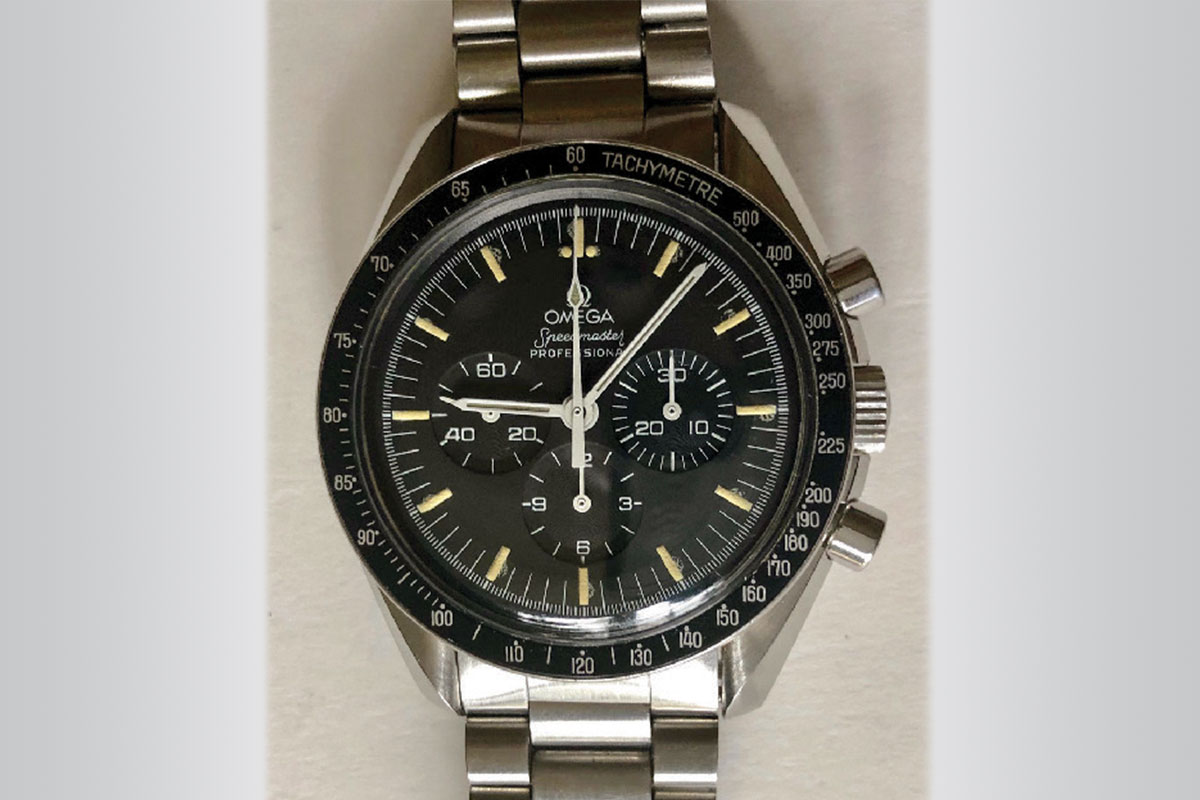
Author’s note: This article was orginally published in the 2019, July/August edition of The Watch & Clock Bulletin.
It is hard to believe that it has been 50 years since Neil Armstrong took his first step on the Moon. I vividly recall the space race and NASA’s role in it, as I received part of the funding for my doctorate in physics from a NASA grant. In August 1969, my last summer in graduate school, we watched on our 17-inch, black-and-white, rabbit-ear–antenna TV as Armstrong stepped onto the Moon. After graduate school, our family moved to Florida where I was a newly minted college professor. We drove to Titusville to watch the launch of many of the Apollo missions, starting with the ill-fated Apollo 13 and ending with the spectacular night launch of Apollo 17. After a brief stint as a professor, I left Florida and began working for NASA at the Langley Research Center in Virginia. The 1970s were tough for engineers and scientists because the massive funding for the space program came to an abrupt end.
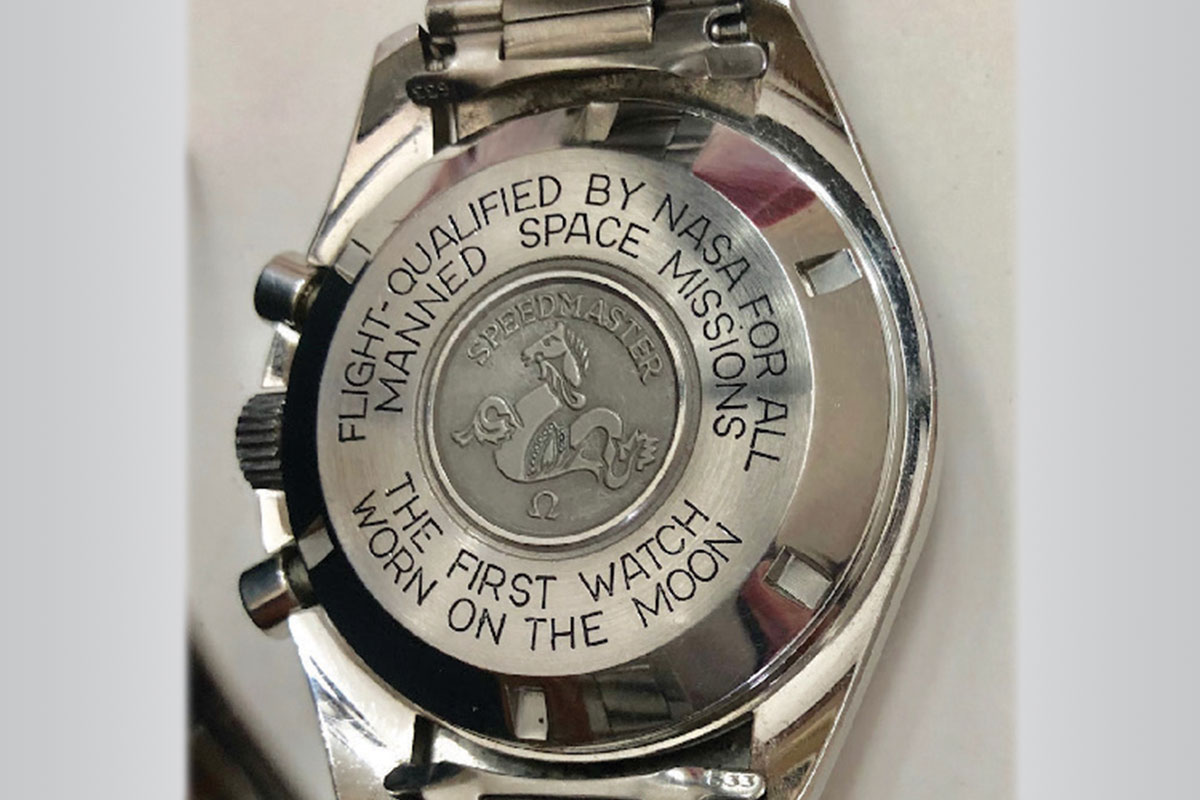
As a watch enthusiast and a NASA employee, I bought a used Omega Speedmaster (Moonwatch) early in my career. The Omega Speedmaster was issued by NASA to astronauts by a special agreement with Omega. The first Speedmaster was introduced by Omega in 1957 as a watch designed for timing racing events. It had the caliber 321 movement. All NASA Apollo pre-Moonwatches had the 321 caliber and the word “Speedmaster” on the back.1,2 The Speedmaster got the nickname Moonwatch because it was used by NASA during the Apollo missions. It remains the only watch qualified by NASA for extravehicular activities (EVAs, i.e., space walks).
My Speedmaster was the post—Moon-landing model with the “Flight-Qualified By NASA For All Manned Space Missions—The First Watch Worn On The Moon” logo on the back (Figure 1) and had the newer caliber 861 movement. I loved to show the watch off to my friends and tell them that I got it from an astronaut!
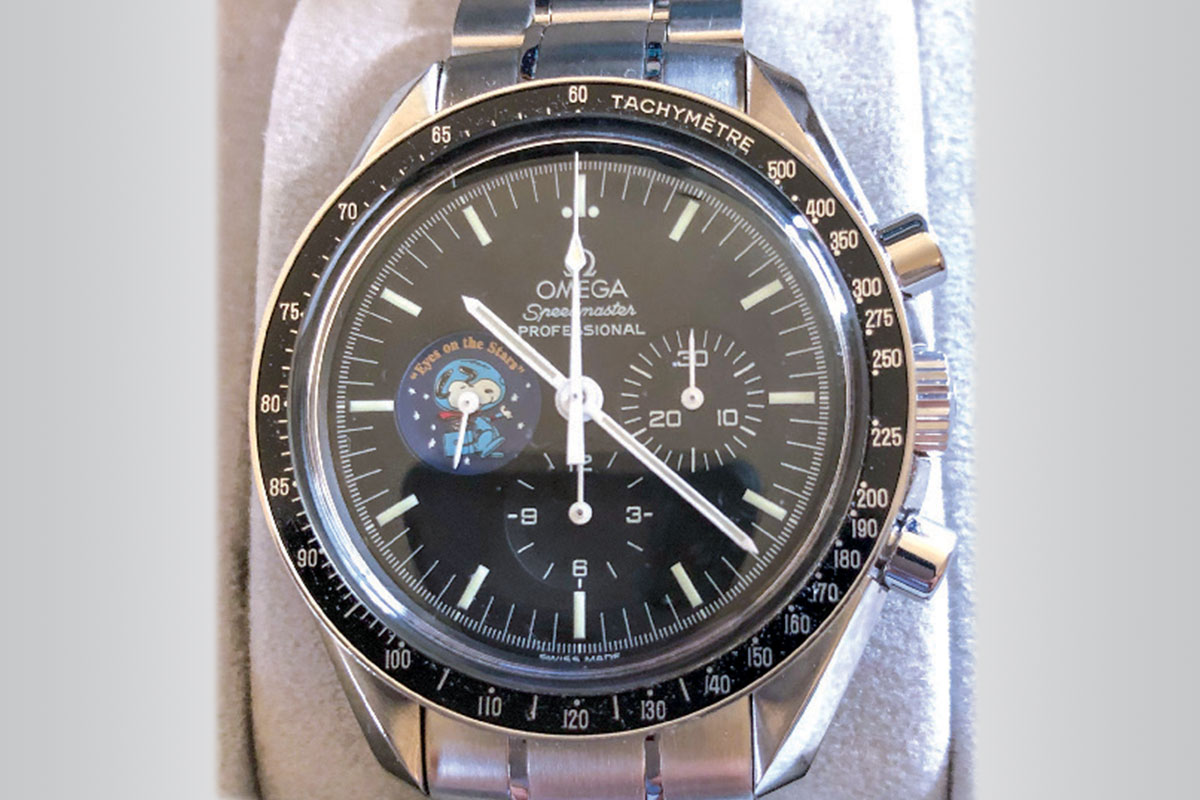
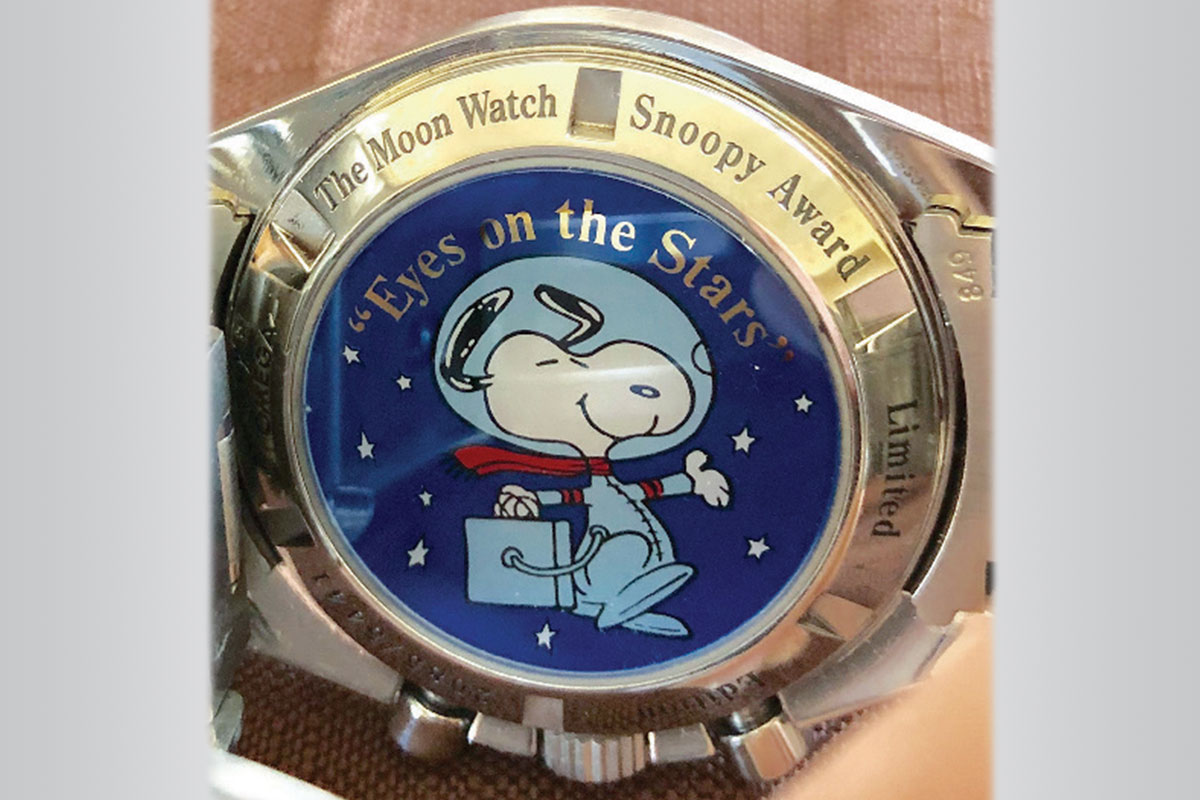
The Omega Moonwatch is still one of my favorite chronographs. The Speedmaster, which is still produced today with various different movements (including the 861, 1861, and others) is a manual wind watch with a mainspring and balance wheel, of course. Note that collectors actually value the pre-Moon versions more highly.
Omega also has produced limited edition Speedmasters, such as the Silver Snoopy model (Figure 2). The Silver Snoopy Award was given to Omega after Apollo 13 in recognition of the use of the Speedmaster in calculating the rocket burn that put the capsule in position to return many years. These watches, as all our watch enthusiasts know, have a large pivoted rotor (swinging mass) that winds up the mainspring due to arm movement. The automatic watch also has the advantage of keeping the mainspring wound up in a “sweet range” that provides almost constant force. Hence, the amplitude of the balance wheel remains fairly constant, leading to better timekeeping.
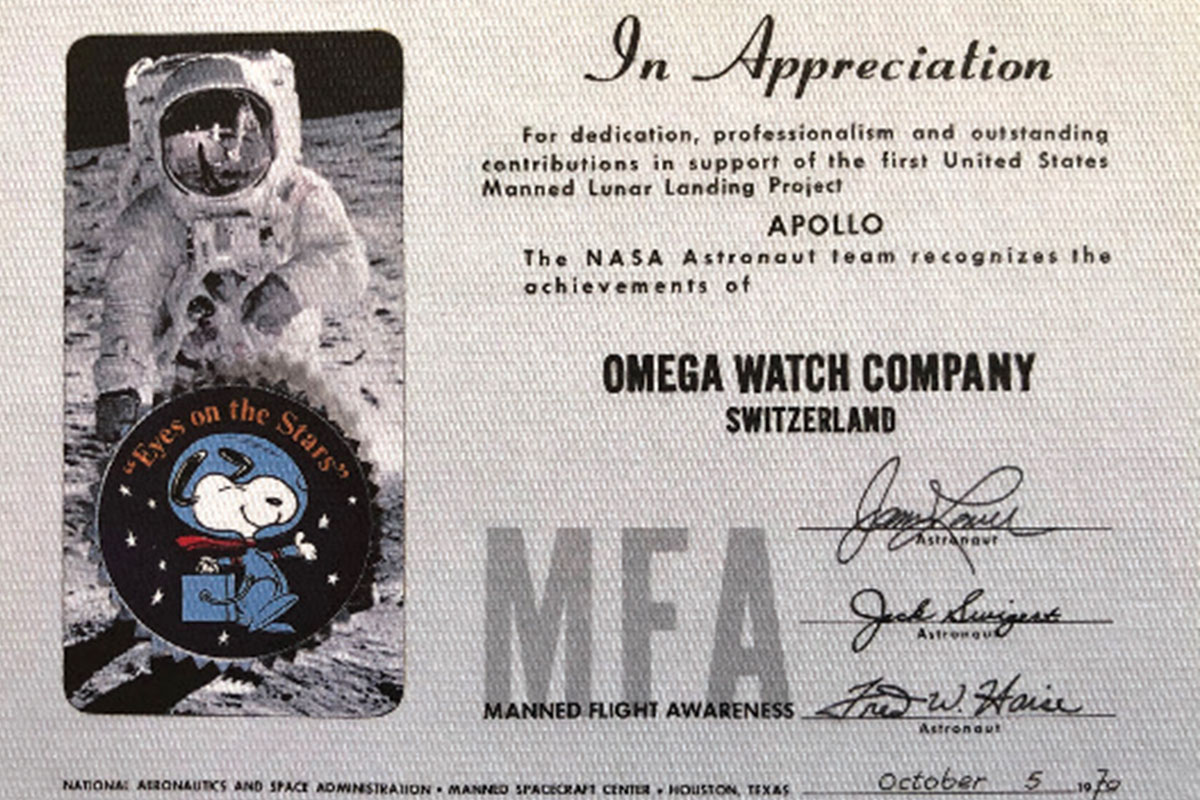
However, a chronograph was needed by the astronauts as a timer and timekeeper, and no automatic chronographs were available in the 1960s during the NASA space race. Chronographs are complicated movements, and adding the self-wind mechanism was not a trivial task. Ironically, the first automatic chronographs were introduced in 1969, the same year as the Moon landing, by both the Swiss and by Seiko of Japan. The Swiss version introduced in 1969 was a joint venture by Huer, Breitling, Buren, and Dubois-Depraz. It was called the Chronomatic and had a caliber 11 movement.3 The Swiss version was first introduced in January 1969 and marketed in August 1969. Seiko released their 6139 movement automatic chronograph to the Japanese market around May 1969.4 It also featured a day-date calendar, which was a further complication that the early Swiss versions did not have.
Now back to the title of this article. The first automatic chronograph worn in outer space was, unless we learn differently, a version of the Seiko 6139. This Seiko watch was worn by Lt. Colonel William Pogue during the 1973–74 Skylab 4 mission, for which he was the mission pilot. This was confirmed by Pogue to watch enthusiast David Bruno. Mr. Bruno wrote letters to the former astronaut around 2007.4 The letters can be seen on the web at the link in reference 4, along with handwritten notes from Lt. Colonel Pogue (who also provided a copy of the original receipt). The purchase receipt lists the date, September 10, 1972; the price at $71.50; and the serial number as 190945.
The serial number dates the manufacture: the first number “1” is for is the year 1971, and the second digit “9” is for the month, September. The story of this watch was never recorded because it was not an “official” NASA-issued watch. Pogue’s official watch was an Omega Speedmaster. A picture of a watch similar to Pogue’s Seiko, a 6139-6005 Seiko with a gold face, is shown in Figure 4. (I plan to restore it as soon as I can get around to it!)
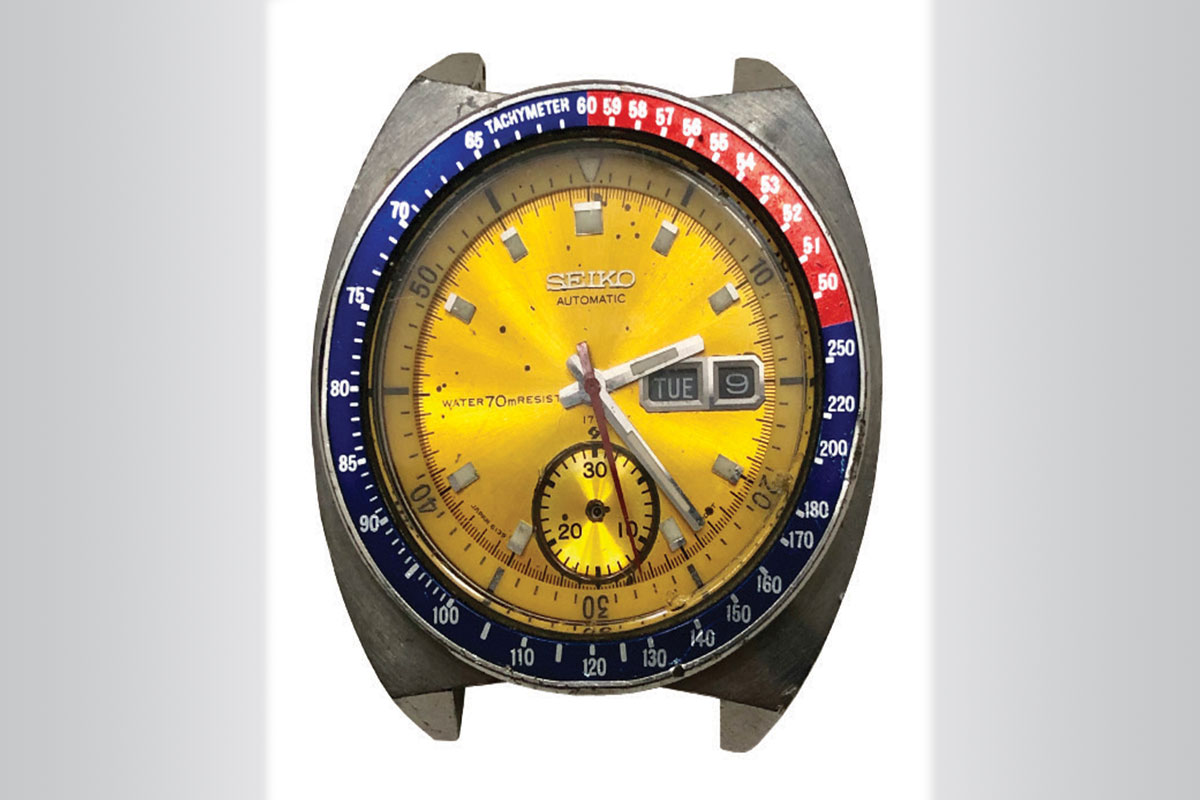
Pogue stated that the self-wind mechanism worked fine in space. Now, some individuals may think that in outer space (zero gravity environment) that an automatic winding movement would not work well if at all. (I cannot help but point out that zero gravity is simulated as the capsule is in free-fall around the Earth, but never hits Earth as it has a high enough tangential velocity to keep it in orbit!) From basic physics, mass has inertia. Even without gravity, the movement of the arm will cause the rotor to wind the watch. Think about a self-wind watch on Earth. If you move the watch, with face up, back and forth horizontally with the rotor perpendicular to gravity, the rotor will spin and still wind the watch. Before reading Pogue’s comments, I had asked other astronauts about automatic wristwatches, and they all told me that automatic watches operated fine in zero gravity. Of course, now many chronograph watches are electronic quartz models. They also work fine in zero gravity. So, when was the first quartz chronograph used in space? Was there an earlier undocumented automatic watch worn in space? We will leave that question for another day!
References
1. Goulard B. “Omega Speedmaster history part 1 – the early pre-moons.” monochrome-watches.com. Accessed on May 13, 2019. tinyurl.com/y5943pha.
2. Omega Speedmaster. https://en.wikipedia.org/wiki/Omega_Speedmaster. Accessed May 13, 2019.
3. Swiss Firms Working in Secret Launch the Watch That Did Not Exist Before: The Self-Winding Chronograph, Swiss Watch and Jewelry Journal, International Edition, February 1969..
4. The “Pogue Seiko.” Accessed May 13, 2019. tinyurl.com/hfhen85.